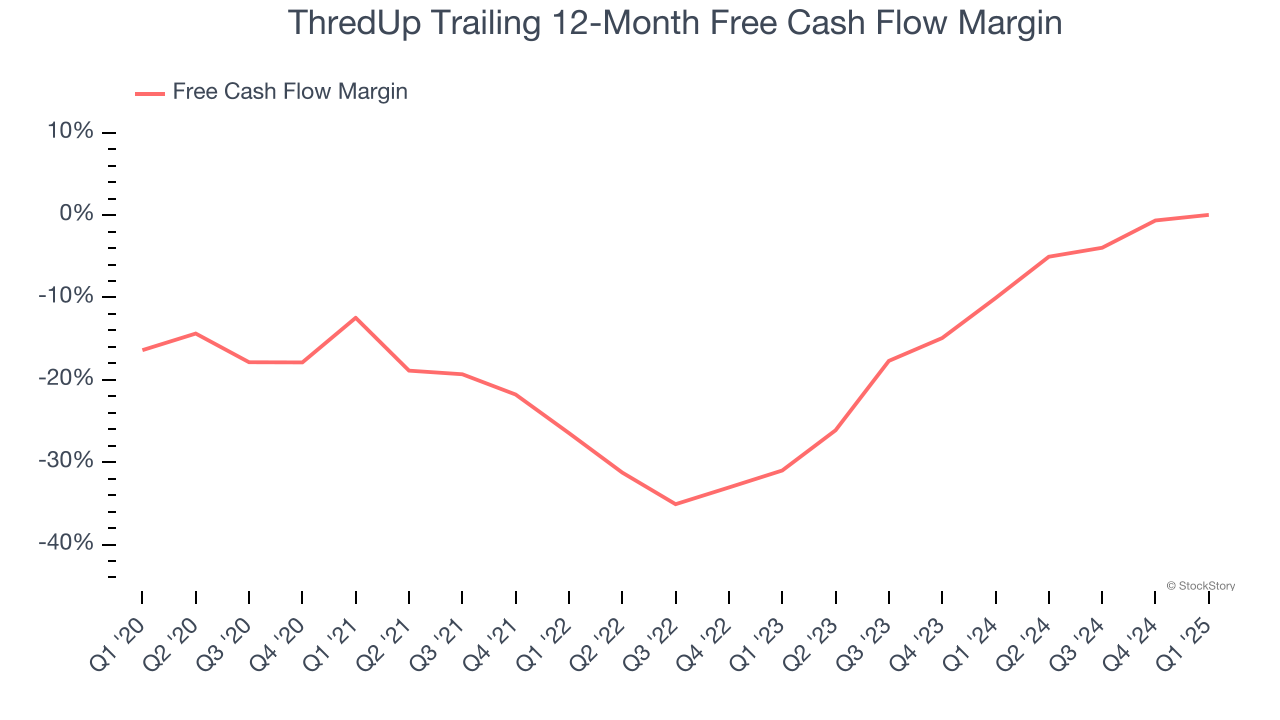
What a fantastic six months it’s been for ThredUp. Shares of the company have skyrocketed 484%, setting a new 52-week high of $8.06. This was partly thanks to its solid quarterly results, and the run-up might have investors contemplating their next move.
Is now the time to buy ThredUp, or should you be careful about including it in your portfolio? Get the full stock story straight from our expert analysts, it’s free.
Why Do We Think ThredUp Will Underperform?
We’re happy investors have made money, but we don't have much confidence in ThredUp. Here are three reasons why there are better opportunities than TDUP and a stock we'd rather own.
1. Decline in Orders Points to Weak Demand
Revenue growth can be broken down into changes in price and volume (for companies like ThredUp, our preferred volume metric is orders). While both are important, the latter is the most critical to analyze because prices have a ceiling.
ThredUp’s orders came in at 1.37 million in the latest quarter, and over the last two years, averaged 6.5% year-on-year declines. This performance was underwhelming and implies there may be increasing competition or market saturation. It also suggests ThredUp might have to lower prices or invest in product improvements to grow, factors that can hinder near-term profitability. 
2. Operating Losses Sound the Alarms
Operating margin is an important measure of profitability as it shows the portion of revenue left after accounting for all core expenses – everything from the cost of goods sold to advertising and wages. It’s also useful for comparing profitability across companies with different levels of debt and tax rates because it excludes interest and taxes.
ThredUp’s operating margin has been trending up over the last 12 months, but it still averaged negative 15.6% over the last two years. This is due to its large expense base and inefficient cost structure.

3. Cash Burn Ignites Concerns
If you’ve followed StockStory for a while, you know we emphasize free cash flow. Why, you ask? We believe that in the end, cash is king, and you can’t use accounting profits to pay the bills.
While ThredUp posted positive free cash flow this quarter, the broader story hasn’t been so clean. Over the last two years, ThredUp’s demanding reinvestments to stay relevant have drained its resources, putting it in a pinch and limiting its ability to return capital to investors. Its free cash flow margin averaged negative 5%, meaning it lit $4.96 of cash on fire for every $100 in revenue.

Final Judgment
We cheer for all companies serving everyday consumers, but in the case of ThredUp, we’ll be cheering from the sidelines. Following the recent surge, the stock trades at 108.5× forward EV-to-EBITDA (or $8.06 per share). At this valuation, there’s a lot of good news priced in - we think there are better stocks to buy right now. We’d recommend looking at the most entrenched endpoint security platform on the market.
Stocks We Like More Than ThredUp
The market surged in 2024 and reached record highs after Donald Trump’s presidential victory in November, but questions about new economic policies are adding much uncertainty for 2025.
While the crowd speculates what might happen next, we’re homing in on the companies that can succeed regardless of the political or macroeconomic environment. Put yourself in the driver’s seat and build a durable portfolio by checking out our Top 6 Stocks for this week. This is a curated list of our High Quality stocks that have generated a market-beating return of 183% over the last five years (as of March 31st 2025).
Stocks that made our list in 2020 include now familiar names such as Nvidia (+1,545% between March 2020 and March 2025) as well as under-the-radar businesses like the once-micro-cap company Kadant (+351% five-year return). Find your next big winner with StockStory today.

